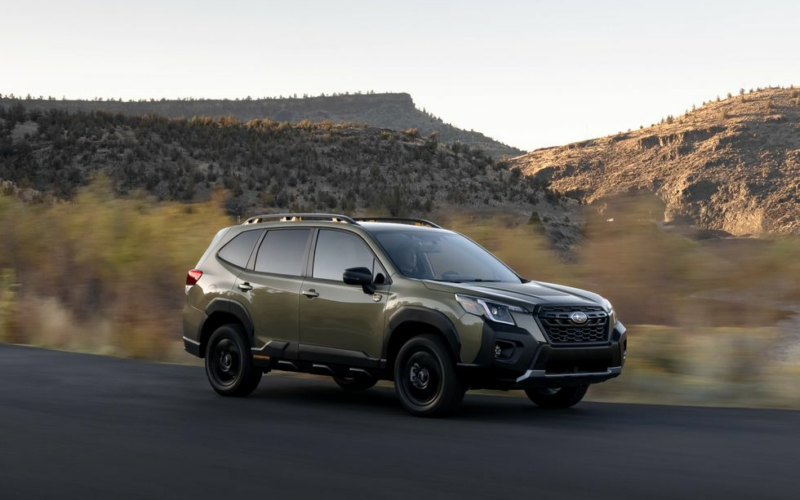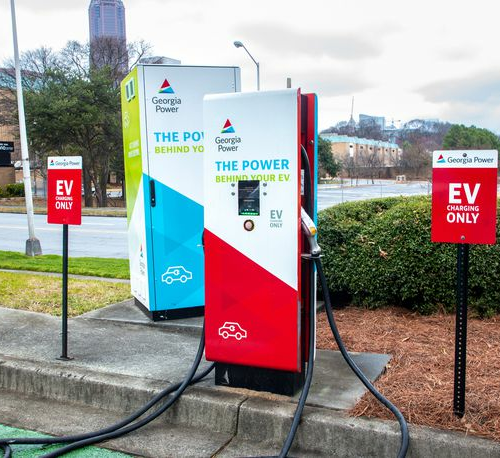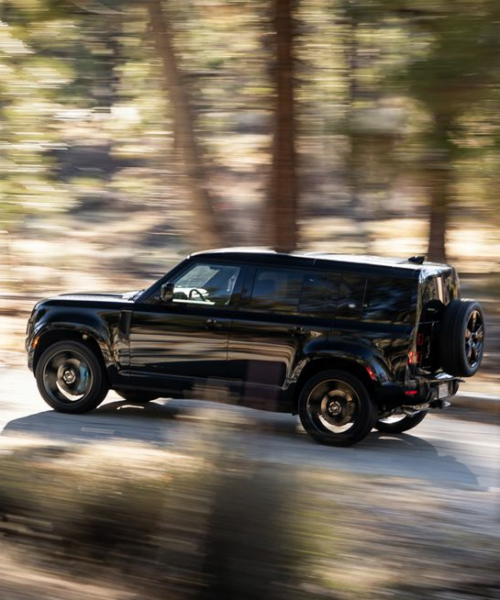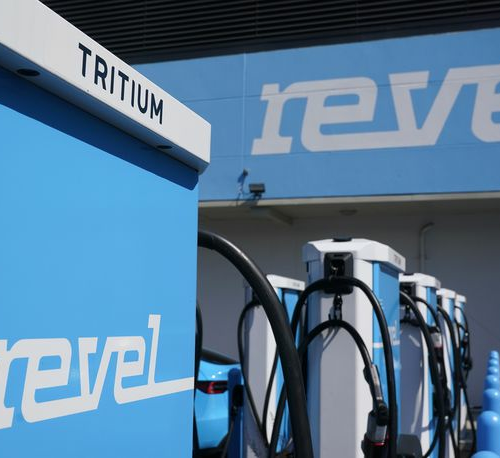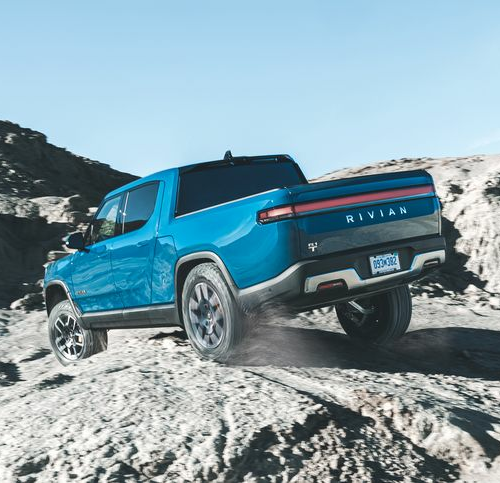BY DAN EDMUNDS | CarAndDriver.Com
Troy Warren for CNT #Cars
With its tidier dimensions and lower price, the hiked-up Forester Wilderness proves that less is more—until you stab the throttle.
When we first saw it, there was little doubt the Wilderness treatment would spread beyond the Subaru Outback. The hardcore-crossover concept has been quietly gaining steam, which only makes sense given that compact SUV sales are off the charts. Crossover lift kits and knobby-tire upgrades are now a thing, and practically everyone says “overlanding” when they mean “car camping.” Subaru owners modding their rides have been at the leading edge of this trend, so it was only natural the parent company would cash in. Enter the 2022 Subaru Forester Wilderness, the second example of the outdoorsy new trim level. We’ve now driven them both, so the question is: Who wore it better?
As applied to the Forester, the Wilderness formula is very familiar. Compared to its siblings, it sits a half-inch higher atop its four-wheel independent suspension thanks to longer dampers and taller springs, and that amounts to a healthy 9.2 inches of minimum ground clearance and an improved breakover angle of 21 degrees. Since the Forester isn’t nearly as long as an Outback, the jacked-up stance conspires with stubbier front and rear overhangs to produce more favorable approach and departure angles of 23.5 and 25.4 degrees, respectively. It’s also some 2.4 inches narrower, so it’s more compatible with brush-lined trails even before Subaru slathers on the Wilderness-spec layer of protective body cladding. Conversely, the Forester Wilderness is 2.0 inches taller than its Outback counterpart, but we’ll take that because it comes with a more upright driving position that makes it easier to see over the hood and pick your way along a trail. Blind crests are no problem because there’s a front camera, but the button to activate it is nowhere near the display itself.

A drive along forest roads near Bend, Oregon, proved that the Forester execution works equally well on both smooth gravel roads suitable for stage rallies and lonely meandering two-track forest trails that haven’t seen the blade of a road grader in years. Subaru’s Wilderness-specific shock and spring tuning readily soaked up washboard surfaces on high-speed tracks, but they also went about the quiet business of damping out head toss through rocky sections, snaking around fallen limbs, or easing down eroded ledges. None of this was black-diamond rock crawling, but vehicles built for that use case would have punished us with the heavy unsprung mass of solid axle overkill thumping up from below. Independent-suspended crossovers have their place out here if they can muster sufficient clearance and traction, and the Forester Wilderness proved to have enough of each.
A good deal of the necessary extra traction comes from a set of Yokohama Geolandar A/T tires, with outline white-letter sidewalls adding spice to an otherwise black background of alloy wheels and cladding. There’s even a matching, full-use spare with its own TPMS sensor in the underfloor well.

Whereas other Foresters have seven simulated gears in their continuously variable automatics (CVT), the Wilderness version has eight, like the Outback. But it differs from even the Outback Wilderness in that it has a wider overall ratio spread across its working range, with an ultra-low 4.07:1 “first gear” that gives the Forester Wilderness a better low-speed crawl ratio when the exclusive Dual-mode X-Mode detects conditions that call for hill-descent control. The 2022 Forester also debuts an improved X-Mode logic that no longer shuts completely off if the driver momentarily exceeds its maximum operational speed of 25 mph. It now goes into a standby mode and will automatically reengage when the car slows to 22 mph. That prevents constant dithering if your speed lingers near 25 mph. The hill-descent control features a related improvement that more quickly resumes the original crawl speed if the driver temporarily adds throttle and then backs out.

The Wilderness will, of course, spend the bulk of its time on pavement, so it’s good there’s nothing overtly off-roady or off-putting about its on-road demeanor (probably not something that could be said if you bolted on random off-road mods you read about in forums). Subaru’s engineering team has delivered a smooth and composed ride that is never harsh. The body doesn’t pitch or bound, and there’s a smidge more reassuring control and less squishiness than with the Outback Wilderness. Frost heaves don’t upset it, and the all-terrain tires were remarkably quiet until we came to a particularly coarse stretch of asphalt that had been chewed by studded tires in previous winters. When pushed, the Wilderness does not feel like it’s standing on tiptoes. It turns into corners smartly, with a modest amount of body lean that builds up gradually and takes a reassuring set. The thing that flummoxes the steering is cruising straight at highway speeds, where the feel is dull and indistinct.
That’s small beer compared to the lackluster engine performance, but this won’t surprise any current-generation Forester owners because the Wilderness has the same 2.5-liter flat-four with a middling 182 horsepower and 176 pound-feet of torque. Why not the 2.4-liter turbo as in the Outback Wilderness? Outback product planners had two homologated engines to pick from, but the fifth-generation Forester has only one, since the turbo 2.0-liter was dropped with the previous model in 2018. For what it’s worth, we didn’t notice a serious lack of beans driving in the forest, and the car felt reasonable enough around town.

That might be because its final drive ratio is a short 4.11:1 instead of the regular Forester’s 3.70:1 gearing. Combined with the CVT’s lower initial gearing, this might shave a couple of tenths off the 8.4-second zero-to-60-mph time we previously measured with a standard Forester, but the more significant benefit of this change is the new 3000-pound tow rating.
Our experience also makes us think the aerodynamic penalty of a rooftop tent will be easier to bear, which is relevant because the Forester Wilderness is specifically courting those buyers. It has beefier wide-set roof rails that can accommodate 220 pounds of mass while in motion and 800 pounds when parked—enough for a three-person tent with occupants. The penalty for the shorter gearing is lower fuel economy, particularly on the highway. A regular Forester is EPA rated at 29 mpg combined (26 city/33 highway), but the Wilderness manages just 26 mpg combined (25 city/28 highway). Nevertheless, this still bests the Outback Wilderness and its estimates of 24 mpg combined, 22 city, and 26 highway.

All 2022 Forester models debut the fourth iteration of Subaru’s EyeSight, which features dual cameras with nearly twice the field of view. On our back-road tour, it proved to be surprisingly good at detecting faint centerlines that have been so thoroughly bleached we weren’t immediately conscious of them. You’d think that kind of sensitivity would lead to a raft of unwanted warnings elsewhere, but we didn’t find ourselves hunting for an “off” button when clipping apexes. The system behaved as if it were able to project a forward path to distinguish a true inattentive lane departure from spirited driving, which isn’t that far-fetched when you consider the kind of added logic that would’ve been necessary to support the new lane-centering feature that supplements the adaptive cruise control.
The 2022 Subaru Forester Wilderness will arrive in December at a price of $33,945. That amounts to $4625 more than the Forester Premium we generally recommend, but it’s also a full $4175 less than the larger and more powerful Outback Wilderness. From where we just sat, the Forester Wilderness is a more right-sized interpretation of the Wilderness concept that does a proper job off the pavement but still comes across as a pleasant daily driver if you’re merely going for the off-road look. Either way, you can now gratuitously toss around the word “overlanding” in conversation. Come to think of it, please don’t.

In Other NEWS


























